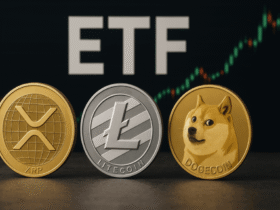For Willy Woo, there are errors of interpretation in on-chain metrics.
According to other analysts, bitcoin changes hands from old whales to institutions.
While the price of bitcoin (BTC) remains above USD 100,000, a new debate is opening up among analysts about the true meaning of the recent movements of ancient currencies on the network by old “whales.”
On-chain data shows an uptick in transfers from addresses inactive for more than seven years, which some interpret as massive sell-offs by so-called OG bitcoiners. These are early investors who accumulated large amounts in the early years of the Bitcoin protocol.
However, Not all specialists agree with that reading. For Willy Woo, the “long-term headlines” metric no longer works. He questions the most widespread interpretation of these metrics. As he explains, the long-term supply of holders (LTH) indicator “has become obsolete” and leads to erroneous conclusions.
«The term ‘long-term holder’ is a misconception. It is defined as any currency that has been held at one address for more than five months,” says Woo. “Everyone is alarmed by a graphic with a misleading name,” he adds.
For Woo, what many interpret as sales by former investors would, in reality, be a “custody rotation” process. That is, the transfer of coins to new storage structures or to corporate entities such as treasuries.
«The drop in long-term supply reflects a rotation of custody, not sales. This phenomenon was much greater in 2017. In fact, it is a sign of strong bull markets,” says the analyst.
Woo explains In addition, movements of ancient currencies – such as those detected in the Glassnode and CryptoQuant charts – They may correspond to simple security updateschanges towards Taproot addresses or the creation of corporate vehicles that use bitcoin as collateral.
«Not everything that seems a’dump‘It is,’ he insists. «There are old bitcoiners moving their coins to banks to protect them from physical attacks, or providing them as collateral for loans. In many cases, there is not a sale, but rather a restructuring,” he emphasizes.
mixed opinions
From a different perspective, Charles Edwards, founder of Capriole Investments, holds that the data on-chain They are clear in showing that some of the biggest historical whales are actually making sales.
«OG whales are selling. “This chart gives a good visual of how many super whales are pulling out of bitcoin,” he said. This, referring to the Glassnode chart below, which effectively shows a notable increase in the orange and red lines over the past few months, corresponding to movements of over $100 million and $500 million respectively, from old addresses.

For their part, Arab Chain analysts they detected a sharp increase in the indicator Exchange Inflow – Spent Output Age Bands of Binance on November 4, reaching its highest level since July. That metric measures the amount of BTC entering exchanges, classifying them according to the age of the coins being moved.
As seen in the graph below, the increase came mainly from the 3 to 7 year old groupsrepresenting large portfolios of veteran investors. This type of activity is usually a “short-term warning” sign, the report notes.

However, from Arab Chain they clarify that the market does not show significant selling pressure: “The price remains close to USD 106,000 despite the movement of old currencies, confirming that the market is going through a period of silent redistribution, not massive sales,” they point out.
Daniel Andrés Peláez: “Not every movement is a sale”
Venezuelan analyst and investor Daniel Andrés Peláez shares a vision closer to that of Woo, underscoring the need to interpret data with context.
“If a long-term direction moves bitcoin, that doesn’t immediately mean it is selling. It could be a change of custody, a restructuring or a transfer to a cold wallet,” he explains to CriptoNoticias.
Peláez highlights that rotations towards institutional directions or towards more convenient legal structures are increasingly common, especially for safety and regulatory reasons.
“Bitcoin does not leave the ecosystem, it simply changes hands strategically, not speculatively,” he added.
The analyst also warns that other macroeconomic factors can explain the recent market stagnation: decisions by the Federal Reserve (FED), the strength of the dollar or the volatility in the derivatives markets.
“Sometimes the price does not go down because someone sells a lot, but because there is not enough purchasing power on the other side,” he points out.

Accumulation of large whales supports the price
Meanwhile, Brazilian analyst GugaOnChain, from CryptoQuant, assures that recent movements reflect a transfer from medium investors to the largest entities in the market.
«Between October 24 and November 7, large whales — with more than 10,000 BTC — doubled (and more) their holdings, while medium whales reduced their accumulation. This shows that strong capital is absorbing the supply,” he details.
According to his analysis, This dynamic explains the resilience of the price above USD 100,000despite the apparent distribution of former owners.
“The aggressive accumulation of large whales acts as support, limiting the bearish potential and preparing the ground for the next bullish phase,” summarizes GugaOnChain.
The CryptoQuant graph below shows that between October 24 and November 7, 2025, large whales (holders of more than 10,000 BTC) doubled their reserves, accumulating 36,019 BTC. This, at the time when The selling pressure of the medium-sized whales decreased.

This behavior reflects a phase of absorption and repositioning of large investors that contributed to keeping the price of bitcoin above $100,000.
Redistribution, not capitulation
In light of metrics and expert opinions, the emerging consensus is that the bitcoin market is going through a process of structural redistribution rather than a sell-off.
Graphs and data on-chain show significant activity from old addresses, but the price behavior—stable above USD 100,000— suggests that the released supply is being absorbed by institutional actors and large accumulators.
In the words of Peláez, “it may seem like a sale, but many times it is just a transfer to more regulated spaces.”
For now, the market remains resilient, and the debate over whether the “old whales” are selling or simply reorganizing its custody remains open.






Leave a Reply